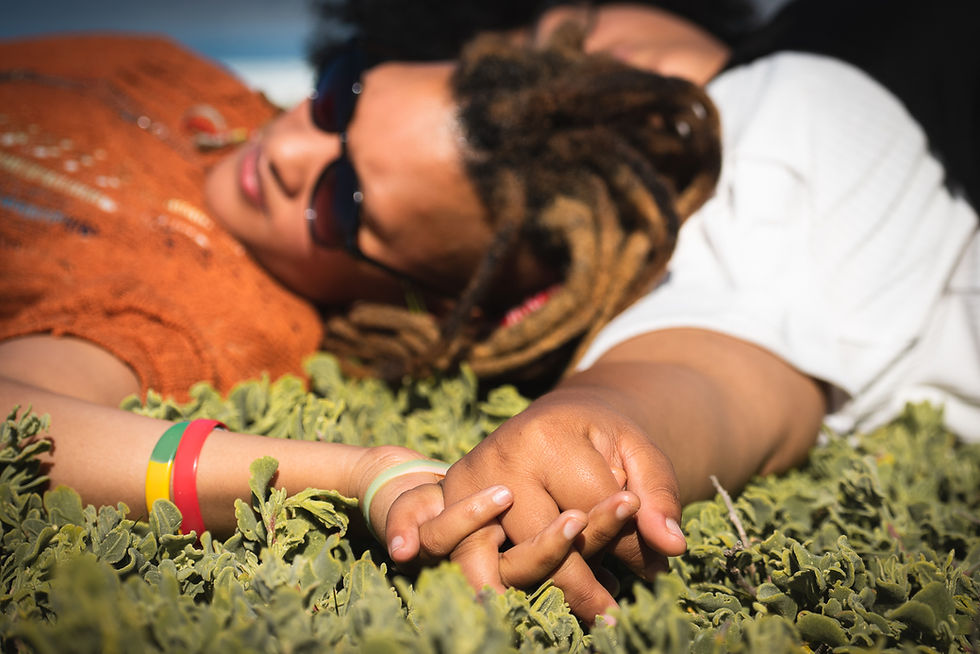How to Be an Ally to the LGBTQ+ Community
- LaKeisha Thomas
- Jul 15, 2025
- 4 min read

Support, Affirmation, and Action for a More Inclusive World
LGBTQ+ individuals—especially youth—face unique emotional, social, and psychological challenges. They may encounter rejection, bullying, isolation, or internalized shame simply for being who they are. In these moments, having strong, informed allies can make a life-changing difference.
Being an ally to the LGBTQ+ community goes far beyond rainbow flags and hashtags. It means listening, learning, speaking up, and taking meaningful action to support the rights, safety, and dignity of LGBTQ+ people in your everyday life.
In this blog post, we'll explore what it truly means to be an ally, why allyship matters, and practical ways you can stand in solidarity with the LGBTQ+ community.
What Is Allyship and Why Is It Important?
Allyship refers to the active, lifelong process of supporting marginalized individuals or communities—even when you yourself do not belong to that group. For LGBTQ+ individuals, having affirming allies can be a protective factor against mental health issues, discrimination, and violence.
Research shows that LGBTQ+ youth who report having at least one accepting adult in their life are 40% less likely to attempt suicide (Trevor Project, 2023). Allyship saves lives.
Being an ally means more than tolerance—it requires you to affirm, advocate, and amplify. LGBTQ+ allies use their privilege to create safer environments, call out injustice, and ensure inclusive representation in schools, workplaces, and communities.

What Does LGBTQ+ Allyship Look Like?
Allyship is not a one-size-fits-all journey. It involves personal reflection, community involvement, and action. Here are several core components:
1. Listen and Learn
Understanding begins with empathy. Take time to hear LGBTQ+ voices—whether through books, podcasts, social media accounts, or conversations. Be mindful of intersectionality, the idea that individuals may hold multiple identities (e.g., queer and disabled, or trans and Black) that impact how they experience the world.
“You don’t have to have all the answers—just be willing to listen without judgment.”
2. Affirm Identity and Pronouns
Affirmation means honoring someone’s chosen name and pronouns without hesitation or questioning. Misgendering or using a deadname (a name someone no longer uses) can cause deep harm. Normalize asking, “What pronouns do you use?” and sharing your own.
3. Speak Up Against Discrimination
Allies challenge homophobia, transphobia, and microaggressions—even when it’s uncomfortable. This includes interrupting offensive jokes, advocating for inclusive policies, and gently educating peers or family members who may not understand.
Silence is not neutrality. It can be perceived as complicity.
4. Create Inclusive Spaces
Whether you're a teacher, therapist, employer, or neighbor—ensure that LGBTQ+ individuals feel seen and safe. This can include inclusive signage, gender-neutral bathrooms, updated intake forms, and visible policies that support diversity and belonging.
5. Support LGBTQ+ Mental Health
Due to stigma and discrimination, LGBTQ+ individuals are at higher risk for depression, anxiety, and suicidal ideation. Culturally competent mental health support and trauma-informed care are essential. Allyship includes advocating for accessible, affirming mental health resources and reducing stigma around seeking help.
Why LGBTQ+ Allyship Is Especially Crucial for Youth
According to the CDC, over 1 in 5 high school students in the U.S. identify as LGBTQ+—yet many report feeling unsafe at school or unsupported at home. They are more than twice as likely to experience bullying, substance use, and mental health concerns than their heterosexual or cisgender peers (CDC, 2024).
When adults—including parents, teachers, and community leaders—step into the role of an affirming ally, it creates a ripple effect. LGBTQ+ youth who feel supported are more likely to thrive, stay in school, and pursue their goals with confidence.
Real Stories: Allyship in Action
In Kalamazoo, Michigan, middle school teacher Maria Allen created a “Safe Space” club after noticing students hesitant to express their identities. The group grew to over 30 students in one semester, becoming a lifeline for LGBTQ+ youth in the school. One nonbinary student shared, “It’s the first time I feel like I belong.”
Stories like these show that allyship isn't about grand gestures—it's about showing up consistently.

Practical Steps You Can Take Today
If you’re ready to become or grow as an LGBTQ+ ally, here are some concrete ways to begin:
Educate Yourself: Read books by LGBTQ+ authors (e.g., “Gender Queer” by Maia Kobabe, “We Are Everywhere” by Matthew Riemer and Leighton Brown). Follow advocacy organizations like GLAAD, The Trevor Project, and PFLAG.
Use Inclusive Language: Swap “ladies and gentlemen” for “everyone” or “folks.” Normalize asking for and using pronouns.
Challenge Assumptions: Don’t assume someone’s gender identity or who they’re attracted to based on appearance.
Support LGBTQ+-Owned Businesses and Events: Attend Pride celebrations, shop from queer creators, and donate to LGBTQ+ causes.
Be a Safe Person: Let friends, family, and clients know that they can talk to you about their identity without fear of judgment or rejection.
Engage in Policy and Advocacy: Advocate for laws that protect LGBTQ+ rights in schools, healthcare, and housing. Vote with inclusivity in mind.
Remember: Allyship Is a Practice, Not a Title
Being an ally to the LGBTQ+ community is not about being perfect—it’s about being present, proactive, and committed. You don’t have to understand everything to be supportive. Just start with compassion, curiosity, and courage.
By showing up for LGBTQ+ individuals with authenticity and accountability, you are helping build a world where everyone feels safe to live their truth.
References
Centers for Disease Control and Prevention. (2024, March 15). LGBTQ+ Youth Data Brief. https://www.cdc.gov/healthyyouth/data/index.htm
Kobabe, M. (2019). Gender Queer: A Memoir. Lion Forge.
PFLAG. (2024). Becoming an LGBTQ+ Ally. https://pflag.org/resource/becoming-lgbtq-ally/
Riemer, M., & Brown, L. (2019). We Are Everywhere: Protest, Power, and Pride in the History of Queer Liberation. Ten Speed Press.
The Trevor Project. (2023). National Survey on LGBTQ Youth Mental Health 2023. https://www.thetrevorproject.org/survey-2023/





Comments